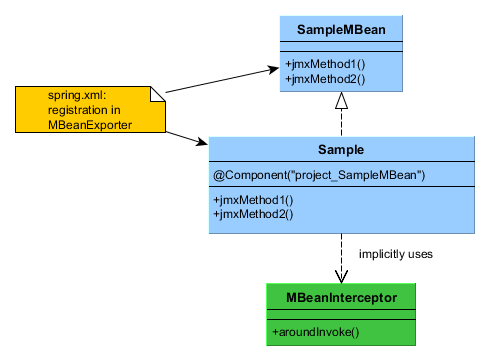4.2.5. JMX Beans
Sometimes, it is necessary to give system administrator an ability to view and change the state of some managed bean at runtime. In such case, it is recommended to create a JMX bean – a program component having the JMX interface. JMX bean is usually a wrapper delegating calls to the managed bean which actually maintains state: cache, configuration data or statistics.

As you can see from the diagram, the JMX bean consists of the interface and the implementation class. The class should be a managed bean, i.e., should have the @Component annotation and unique name. The interface of the JMX bean is registered in spring.xml in a special way to create the JMX interface in the current JVM.
Calls to all JMX bean interface methods are intercepted using Spring AOP by the MBeanInterceptor interceptor class, which sets the correct ClassLoader in the current thread and enables logging of unhandled exceptions.
|
Warning
|
The JMX bean interface name must conform to the following format: |
JMX-interface can be utilized by external tools, such as jconsole or jvisualvm. In addition, the Web Client platform block includes the JMX console, which provides the basic tools to view the status and call the methods of the JMX beans.